
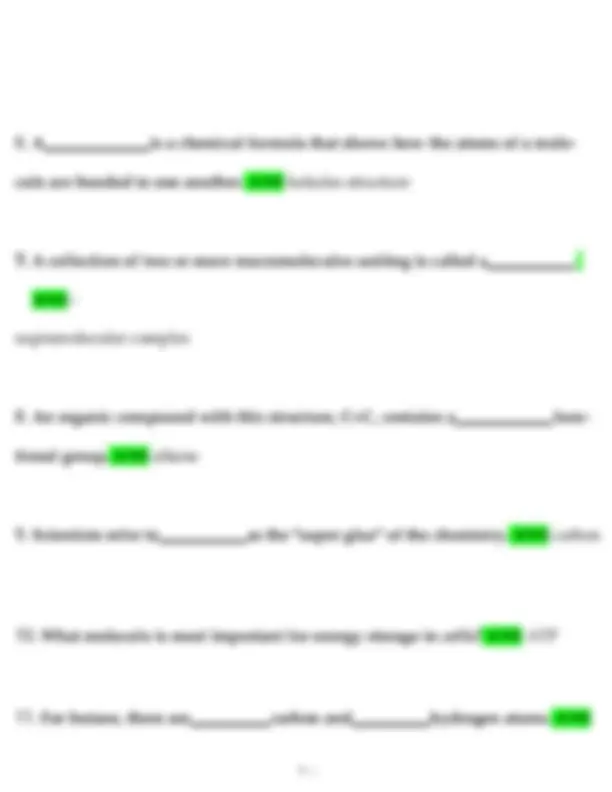
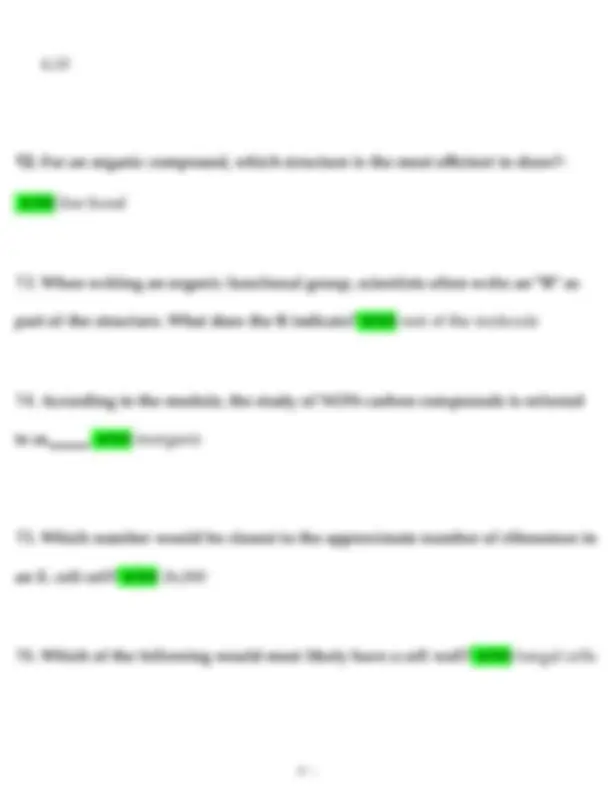
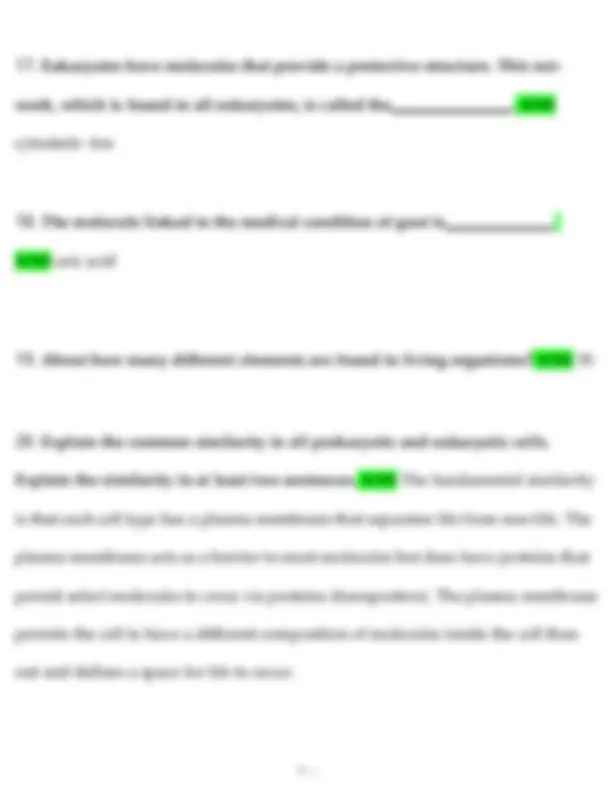
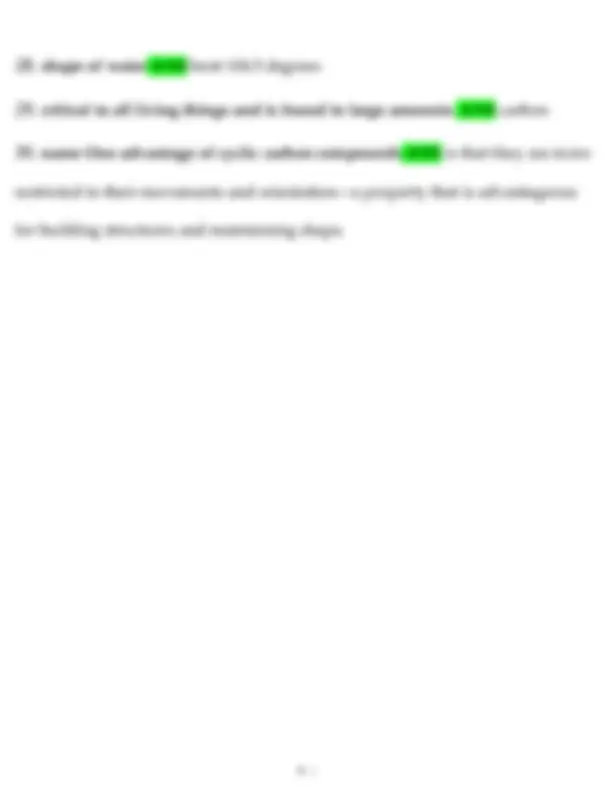
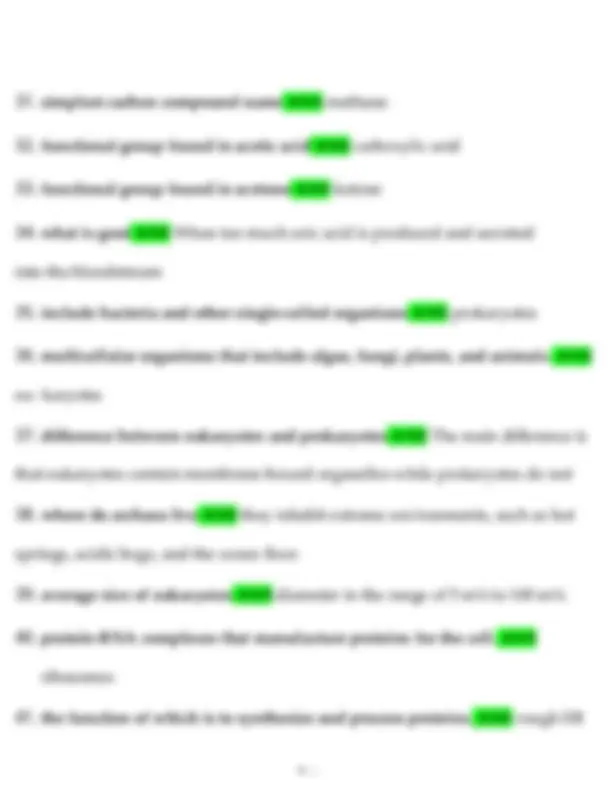
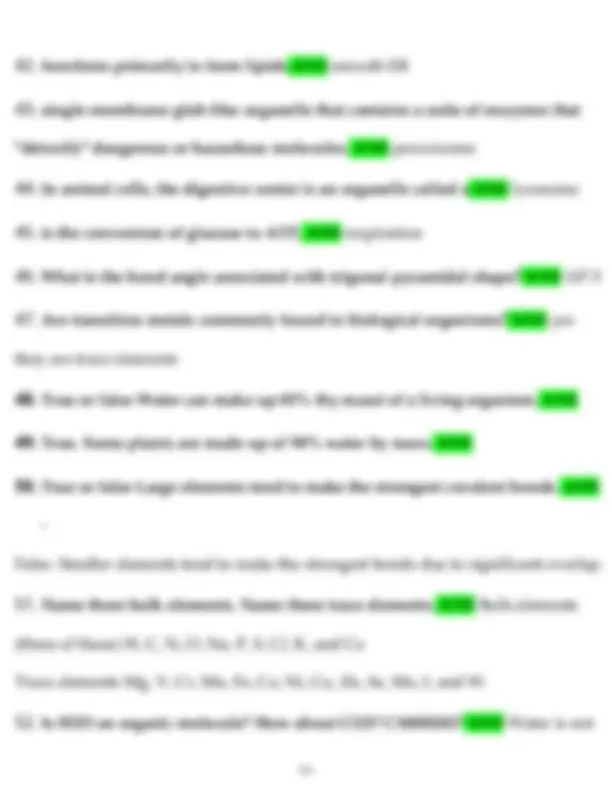
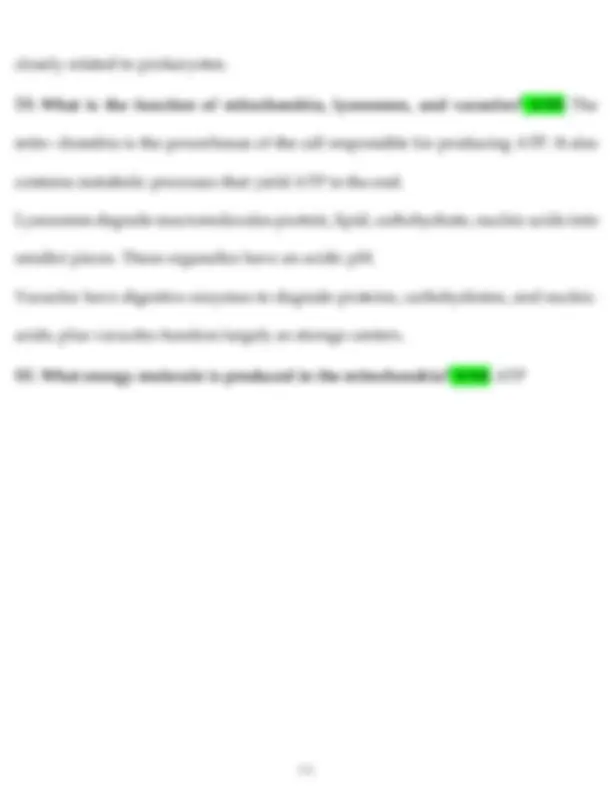


Study with the several resources on Docsity

Earn points by helping other students or get them with a premium plan


Prepare for your exams
Study with the several resources on Docsity

Earn points to download
Earn points by helping other students or get them with a premium plan
Community
Ask the community for help and clear up your study doubts
Discover the best universities in your country according to Docsity users
Free resources
Download our free guides on studying techniques, anxiety management strategies, and thesis advice from Docsity tutors
This Module 1 study guide for CHEM 210 includes expert-verified questions and answers on biomolecules, functional groups, organelles, carbon chemistry, and the difference between prokaryotes and eukaryotes. Ideal for pre-nursing, health science, and biochemistry students in courses at SNHU, ASU, or Chamberlain.
Typology: Exams
1 / 13

This page cannot be seen from the preview
Don't miss anything!








12. For an organic compound, which structure is the most efficient to draw?- ANS line bond
by forming numerous carbon-carbon bonds; we call these large molecules polymer. 4. Lastly, carbon can form cyclic structures, which are also called ring compounds.
False. Smaller elements tend to make the strongest bonds due to significant overlap.
or- ganic; it does not contain carbon. Both CO2 and C100H202 are organic compounds.
closely related to prokaryotes.